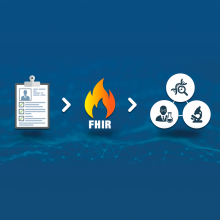Monday, September 30, 2019

The National Institutes of Health recently awarded two contracts related to the use of the Fast Healthcare Interoperability Resources (FHIR) standard in biomedical research.
FHIR is a standardized way of transmitting health data from one health information system to another through an application programming interface. Use of a standard such as FHIR could accelerate the use of clinical data for research. The FHIR standard is already broadly used in health care, and several federal health agencies are using FHIR to exchange data.
NIH would like to develop and test FHIR tools for researchers and advance the sharing of phenotypic information using the FHIR standard.
Vanderbilt University Medical Center (VUMC) in Nashville, Tenn., will develop and test FHIR tools for researchers to increase the availability of high-quality, standardized research data sets. VUMC will focus on tools that can extract data from electronic health records to be used for research and that can map research data to the FHIR format.
The Broad Institute, a host of the Global Alliance for Genomics and Health (GA4GH), in Boston, Mass., will develop and test a FHIR profile to increase the availability of high-quality, standardized phenotypic information for genomic research and genomic medicine. Applying the FHIR standard to phenotypic information can accelerate the use of this type of data for research.
These two awards are just the latest FHIR-related activity at NIH. The Office of Data Science Strategy released a Request for Information earlier this month seeking input on the use of FHIR for research. The office previously issued a Guide Notice encouraging researchers to use this standard and a Notice of Special Interest to small business communities announcing its special interest in supporting applications that use FHIR in the development of health IT products and services. Use of the FHIR standard is aligned with the NIH Strategic Plan for Data Science.


